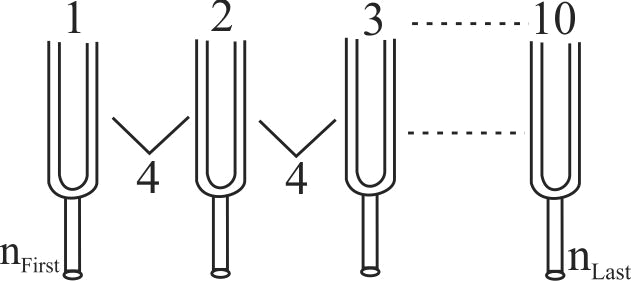354999 Two vibrating tuning forks produce progressive waves \({y_{1}=4 \sin (500 \pi t)}\) and \({y_{2}=2 \sin (506 \pi t)}\). These tuning forks are held near the ear of a person. The person will hear \({\alpha}\) beats/s with intensity ratio between maxima and minima equal to \({\beta}\). Find the value of \({\beta-\alpha}\).
354999 Two vibrating tuning forks produce progressive waves \({y_{1}=4 \sin (500 \pi t)}\) and \({y_{2}=2 \sin (506 \pi t)}\). These tuning forks are held near the ear of a person. The person will hear \({\alpha}\) beats/s with intensity ratio between maxima and minima equal to \({\beta}\). Find the value of \({\beta-\alpha}\).
354999 Two vibrating tuning forks produce progressive waves \({y_{1}=4 \sin (500 \pi t)}\) and \({y_{2}=2 \sin (506 \pi t)}\). These tuning forks are held near the ear of a person. The person will hear \({\alpha}\) beats/s with intensity ratio between maxima and minima equal to \({\beta}\). Find the value of \({\beta-\alpha}\).
354999 Two vibrating tuning forks produce progressive waves \({y_{1}=4 \sin (500 \pi t)}\) and \({y_{2}=2 \sin (506 \pi t)}\). These tuning forks are held near the ear of a person. The person will hear \({\alpha}\) beats/s with intensity ratio between maxima and minima equal to \({\beta}\). Find the value of \({\beta-\alpha}\).
